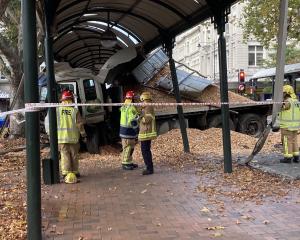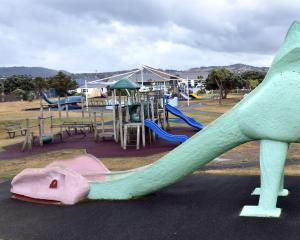And it would consider taking ownership of the groyne only once it understood what it could potentially be liable for in the future.
It could also require the private property owners who would benefit from the erosion protection the groyne should offer, to pay for its ongoing maintenance, possibly through a targeted rate.
The tiny settlement on the Otago Peninsula took up nearly two hours of councillor discussion time during the pre-draft annual plan hearing in Dunedin yesterday. Residents of Te Rauone have been trying to get the council, which owns a reserve among their properties, involved in the beach erosion issue for more than 10 years.
Port Otago has proposed it should construct a breakwater at Te Rauone that would protect both private properties and the reserve.
The residents have offered to pay for half of the about $160,000 construction cost, and have asked the council to pay the other half and take ownership and future maintenance responsibilities for the groyne.
Councillors yesterday agreed that, pending positive outcomes from the council's own investigations of risks and costs related to the project, it would contribute a proportionate amount, up to $50,000, to the installation of the groyne.
If the review was favourable, it would then identify an ownership structure that met its concerns about liability, ongoing maintenance, sea level rise effects on the groyne, land owners involved, a confirmation of charging mechanisms, including, possibly a targeted rating scheme, and any other risks of council involvement.
Cr Paul Hudson started the debate by urging councillors to make a decision, and not leave Te Rauone residents with uncertainty for another year.
''We have sat on our backsides and our hands regarding this issue since 1993, when residents first approached the ORC and DCC, but even at that stage it was clear ORC did not want to be involved ... Please, whatever we do, decide it has to be in this year's [2013-14] annual plan, so the residents threatened by the seawater are clear about what the decision is.''
Cr Jinty MacTavish said she, as the ward councillor for the affected area, had given the complex situation much thought and decided the council should not take any responsibility for protecting private properties from the sea. Given the predicted sea level rise, it would bankrupt the council.
She was supported by Cr Lee Vandervis, who said the council should be giving ''a clear indication to these people, and residents in other outlying areas like Aramoana, Te Ngaru etc, that we are simply not able to turn back the sea and simply not able to save their properties.''
Mayor Dave Cull said if the council was to accept the responsibility for protecting all private property from sea level rise, ''the debt from the stadium would look like chicken feed''.
''We all acknowledge the council does not have an obligation to private landowners, but protecting the reserve will cost us something, anyway, at some level, and I can accept a composite deal is acceptable. However, I am very concerned about precedent.''
Cr Richard Thomson said he wanted to know whether the council's public liability insurance would cover and unintended consequences from the breakwater before he could be happy with taking ownership of the groyne.
He also raised the issue of a targeted rating to cover the long-term maintenance costs.
Cr Bill Acklin said he had listened to the Te Rauone community's pleas for the past 18 months and the problem was beyond their control.
Deputy mayor Chris Staynes said the matter was complicated by the fact the residents who would benefit were the people who had over the years built their own protections, which were, in turn, accelerating the erosion of the reserve.
''My view is the situation will not go away because sea rise will continue. It is time for the residents to understand putting in a groyne is a short-term solution.''
Although they were concerned about the short period of time for large amount of work the council sought, council staff agreed to report back to the community development committee by March.
The proposal will be open to feedback from the public, during the consultation period on the draft 2013-14 annual plan.












